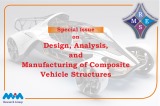Research Article
Compression strength behaviour of fibre-reinforced concrete made with hoop-shaped waste polyethylene terephthalate fibre
Fadhluhartini Muftah, Norizah Omar, Ahmad Rasidi Osman, Mohd Syahrul Hisyam Mohd Sani
Civil Engineering Studies, College of Engineering, Universiti Teknologi MARA (UiTM) Cawangan Pahang, Bandar Jengka, Pahang, Malaysia
Keywords
Abstract
Compression Strength Behaviour;
Fibre-reinforced Concrete;
Waste Polyethylene Terephthalate;
Hoop-shaped Fibre;
Environmental Problem
Fibre-reinforced concrete (FRC) is a special concrete incorporated with fibre that can replace reinforced concrete for utilising in structural applications. FRC with plastic waste fibre is introduced in construction to resolve the corrosion problem of the reinforced steel bar in the concrete, resolve the cracking on the concrete and minimise the environmental problem which occurred due to plastic bottle waste disposal and non-biodegradable material. The main objective of this study is to determine the compression strength behaviour of waste Polyethylene Terephthalate (PET) fibre with hoop-shaped in FRC in percentages of 0.1%, 0.2%, 0.3%, 0.4%, 0.5%, 0.6%, 0.7% and 0.8% weight to weight of cement. For that reason, the waste mineral bottle water is collected, cleaned and cut into 100 mm of length and 5 mm of width to propose hoop-shaped waste PET fibre. FRC with waste PET fibre is tested for its workability in fresh conditions and its water absorption and compression strength in hardened conditions. Furthermore, the tensile test is conducted for determining the stress and strain behaviour of waste PET fibre in two conditions; in single and hoop-shaped. From the experimental activity, the waste PET fibre of 0.5% produced the appropriate compression strength value and recorded a percentage difference approximately of 6.33% for 28 days duration as compared with a control mix. In addition, the percentage difference of the water absorption of all mixes is reported to have in the range of 0.25% to 25.96% when compared with the control mix which is tremendously affected the compressive strength.
© 2023 MIM Research Group. All rights reserved.


